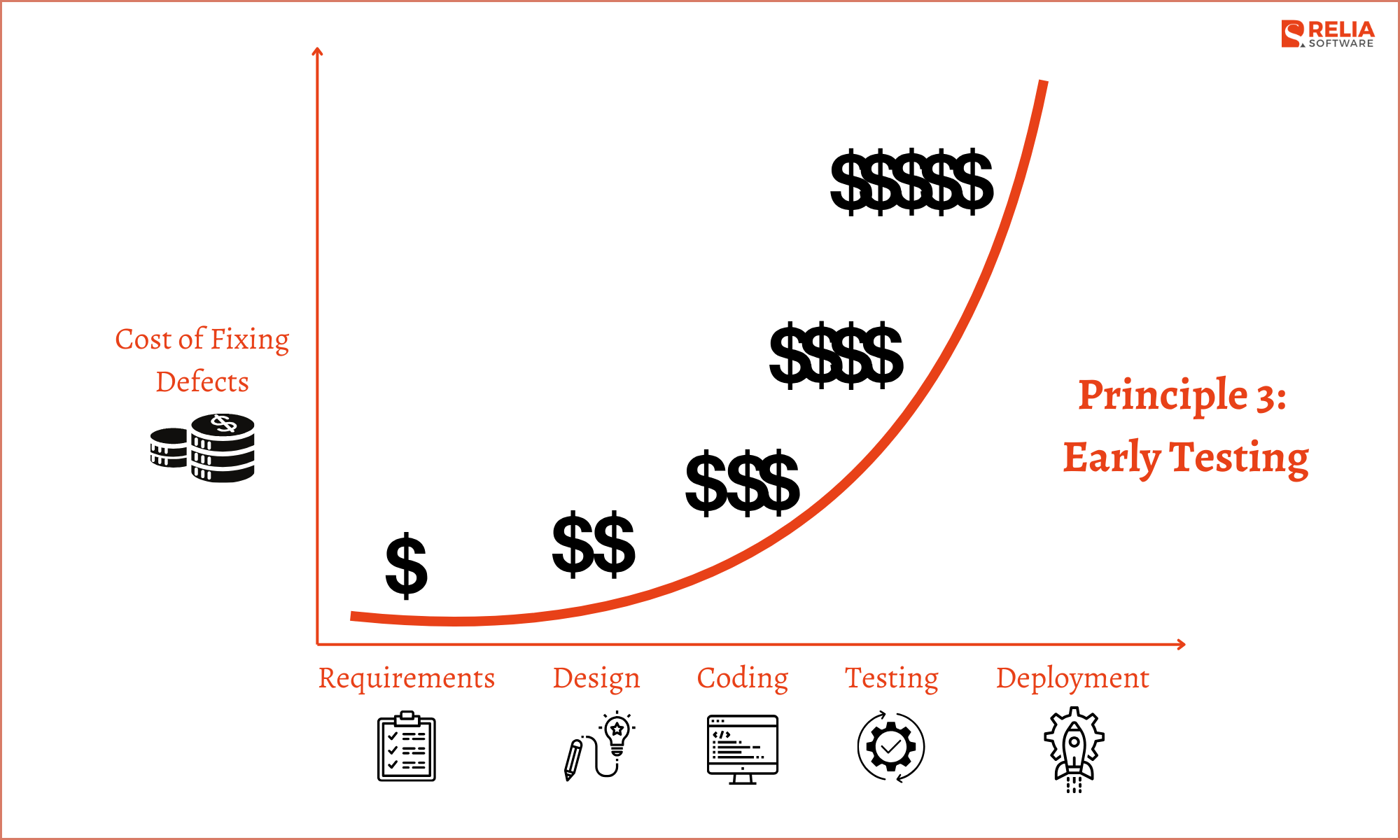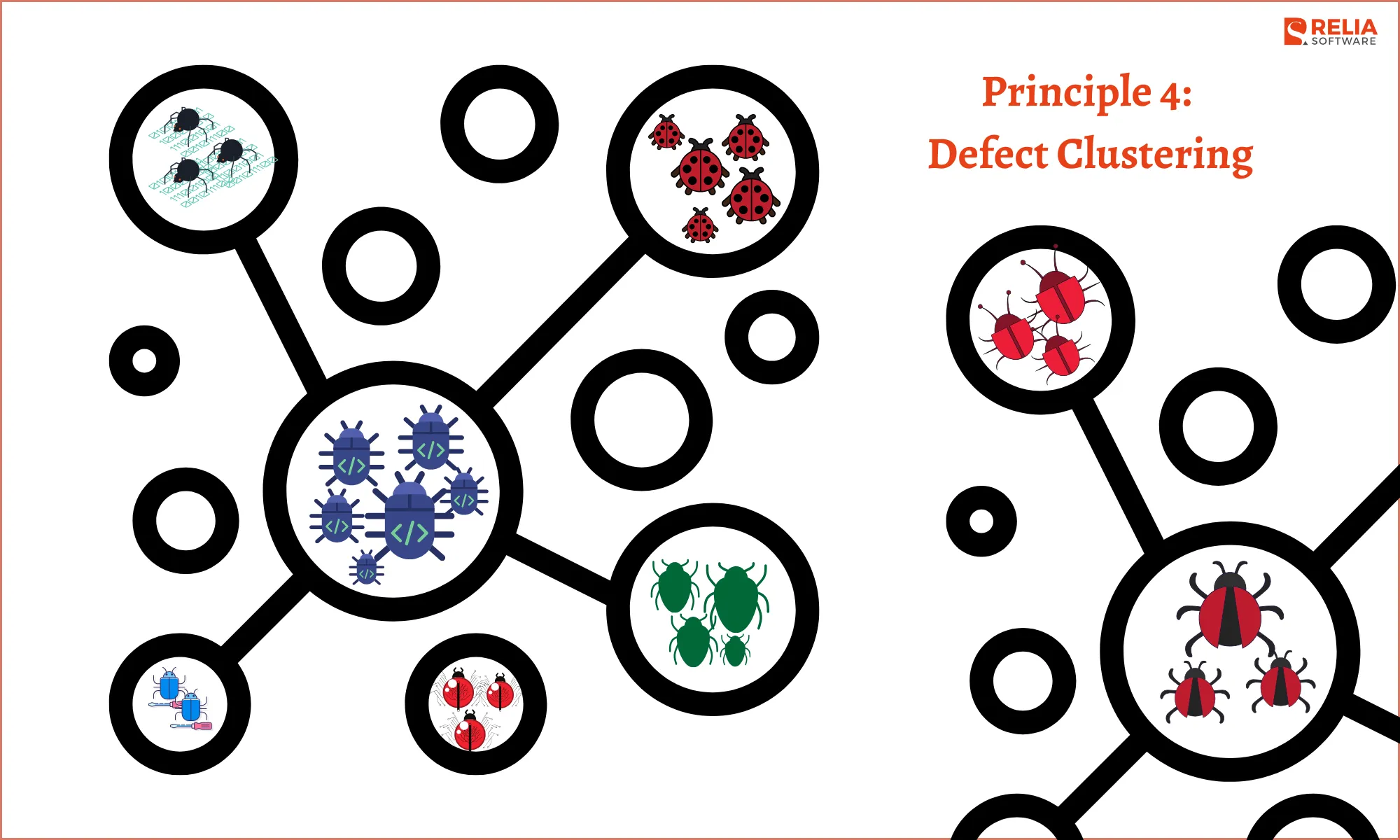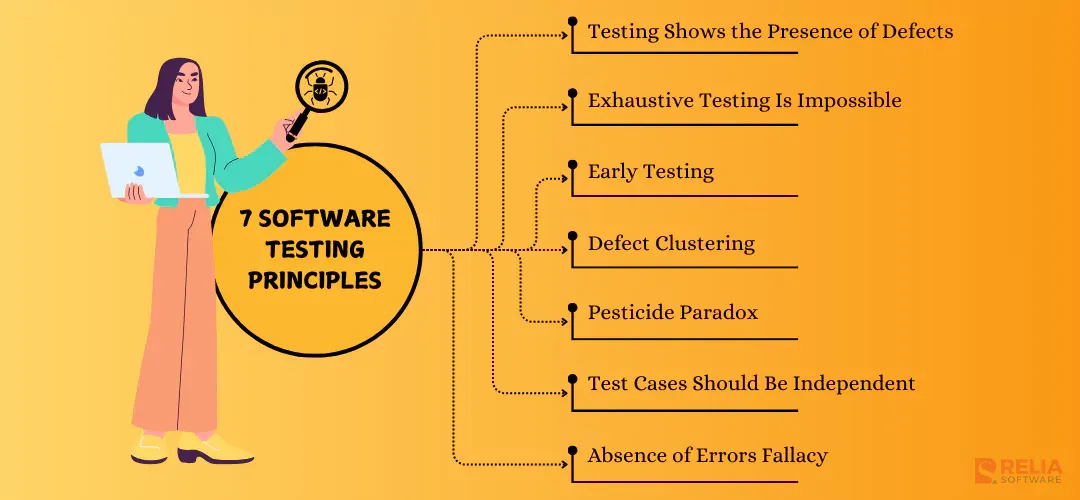Software testing is the process of implementing software or an application to detect defects or bugs. It evaluates software based on system specs and user requirements. The software development life cycle (SDLC) includes software testing at every stage. It can also be done in program modules.
To test an application or software, you must adhere to certain rules to ensure that your product is free of flaws. This also allows test engineers to test the software with less work and time. Let’s explore 7 software testing principles that you should remember in this blog. Check it out!
>> Read more:
- What is Automation Testing in Software Development?
- End-To-End Testing: Definition & Best Practices
- Differences Between Functional and Non-Functional Testing
Principle 1: Testing Shows the Presence of Defects
The first principle of software testing is to help uncover bugs and errors in the software, but not to fix them. These bugs can cause unexpected behavior, incorrect calculations, security vulnerabilities, and slow performance. So, they must be found and reported early in development by testers. Developers can fix them before releasing the software. Early bug fixes are faster and cheaper.
Testers just focus on identifying issues objectively, while developers use their code knowledge to diagnose and fix them. This clear separation of duties ensures efficient testing and reduces potential conflicts within the development team.
Example:
A tester has a shopping cart glitch on an e-commerce website during testing. The tester thoroughly details how to reproduce the bug and intended behavior in the bug report. This report enables the software developer to check the code and fix the issue. To confirm bug correction, tester retests functionality.

Principle 2: Exhaustive Testing Is Impossible
This principle recognizes that exhaustive testing is impossible in software testing. Instead, it stresses prioritizing and testing high-risk regions.
Risk-based testing applies to critical software functions, user interactions, and failure spots identified in these methodologies. Testers can prioritize and build test cases for the most vulnerable locations. This method optimizes testing resource allocation and efficiency.
Example:
E-commerce websites’ secure payment processing and user identification are high-risk. Testing these areas requires more effort and money for complex test cases. Simulating user logins and testing credit card payment methods may uncover security vulnerabilities. Lower-risk services like product descriptions may be checked less.
Principle 3: Early Testing
Priority should be given to software testing. It should begin early in software development and continue throughout the development lifecycle, from requirements gathering to deployment and beyond.
Early and ongoing testing is cheaper and easier than later phases. It also ensures that the program meets user needs and identifies issues to solve before they become serious issues. Continuous testing will make the final product more stable and reliable.
Example:
Imagine that you develop an e-commerce site. During requirements gathering, testers can apply mockups and prototypes to analyze user stories, highlight places where functions may not satisfy user needs, and confirm the design meets expectations.
As development continues, testers can create unit testing to check individual functions and integration tests to ensure component compatibility.

>> Read more: V Model in Software Development: The model that prioritizes early testing
Principle 4: Defect Clustering
This software testing principle emphasizes simplifying difficult problems into test cases. Granular test cases should be well-defined and target a specific program behavior. This also increases testing accuracy by isolating functionality and finding failure sources.
Example:
E-commerce checkout is complicated. Testers can divide the checkout cycle into smaller, more focused test cases instead of one huge one. Individual test cases may be validated as address entry, payment method selection, or order confirmation. A more granular methodology enables more precise testing and faster checkout issue identification.

Principle 5: Pesticide Paradox
Pesticide Paradox compares software testing to agricultural pesticide use. The paradox describes the ineffectiveness of using the same tests throughout time. The paradox occurs when testing teams use the same tests without adapting or diversifying.
Just as pests develop resistance to pesticides over time, software can become accustomed to the same test cases. These tests become less effective at finding new vulnerabilities as the software evolves. They may find fewer faults, making the software more vulnerable to other defects.
To avoid the "Pesticide Paradox," testing teams must adapt to changes. This needs analyzing and upgrading test cases, adding new testing methods, and considering alternative testing viewpoints.
Example:
A mobile app test suite has been operating for several months, with no new bugs discovered. The team examines and updates the test cases, introducing new ones that address various usage scenarios and edge cases. As a result, they uncover previously unnoticed flaws.
Principle 6: Test Cases Should Be Independent
Writing independent, self-contained test cases is essential, according to this principle. Because independent tests are not reliant on the results of other tests or conditions, they greatly simplify testing and debugging.
If a test fails, it’s easier to detect the issue because it isn’t connected to other tests. Independent tests also support parallel testing, allowing multiple tests to run at the same time, which helps save time.
Example:
Imagine a well-designed e-commerce platform. A test case for valid user login should run independently. Whether account registration has been tested or not, the login test should be run at any time. If the login test fails, it's easy to find the fault in the login process since it's independent.
Principle 7: Absence of Errors Fallacy
This principle highlights the importance of retesting after bug fixes. Just because a bug is reported as fixed doesn't necessarily mean it's truly resolved. Rigorous retesting is essential to ensure the fix works as intended and to prevent regressions (the re-introduction of bugs).
Example:
The tester reruns the test case after the e-commerce web developer addresses the shopping cart bug. After adding the items to the basket, checkout, and checking the total, the shopping cart should calculate appropriately. If the retest passes, the fix works. If the retest fails, the fix may be inadequate or generate a regression bug, requiring further study.
>> Read more:
- AI in Software Testing: How It Works, Benefits & Challenges
- Top 10 Best End-to-End Testing Tools and Frameworks
- Top 6 Automation Testing Tools for Businesses
- Manual Testing vs Automation Testing: Which is Better?
Conclusion
These software testing principles can help you test more efficiently, focus, and improve your testing strategy. Combining all these principles lets you maximize efficiency by efficiently using your time and efforts.
If you are looking for a software testing service, Relia Software can help! Relia Software's Software QA & Testing Services have consistently produced high-quality apps. Our highly skilled QA specialists understand industry best practices and cutting-edge testing methods to give solid, bug-free software that surpasses customer expectations.
>>> Follow and Contact Relia Software for more information!
- testing
- development

